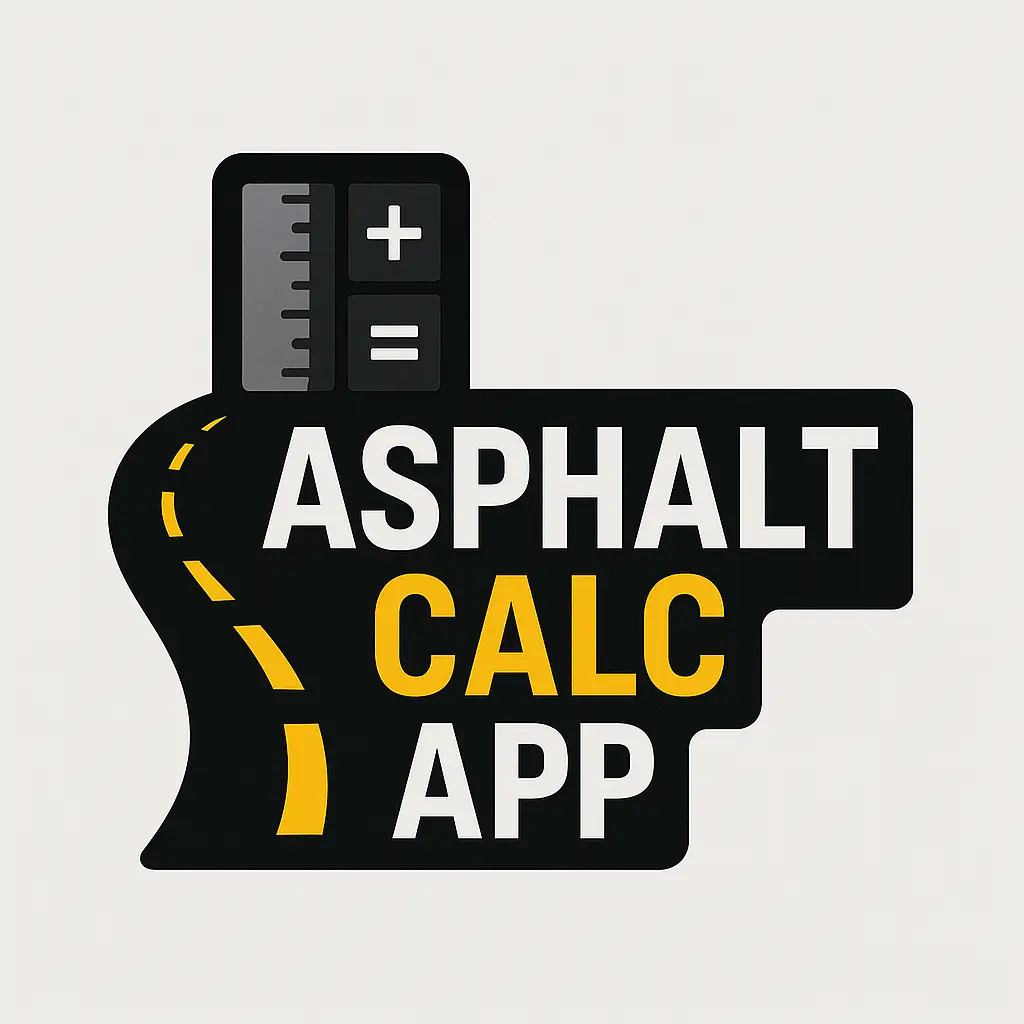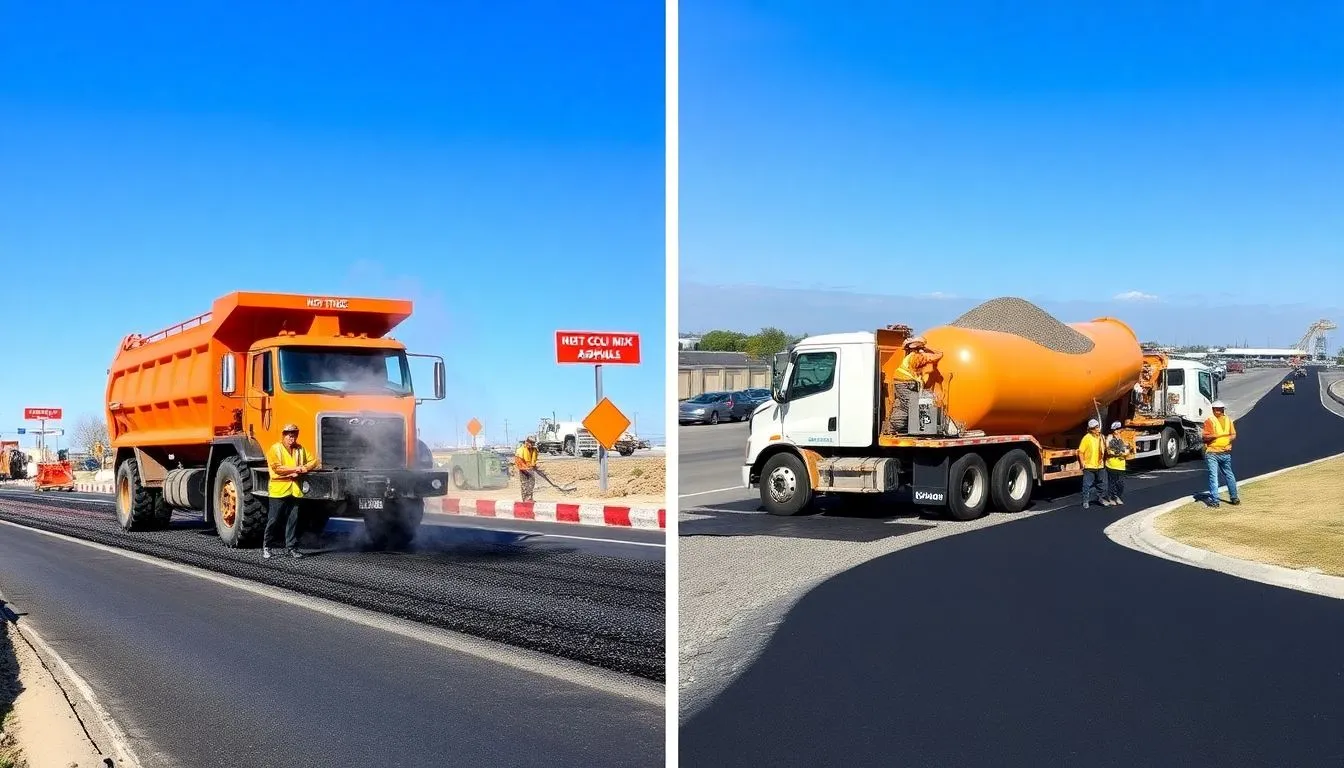Introduction
Hot mix and cold mix asphalt are two primary pavement solutions, and understanding their differences is crucial for choosing the right option. The foundation of contemporary driveways, parking lots, and roadways is asphalt. It keeps vehicles moving smoothly and safely.
Contractors and property owners must pick the right asphalt type for each project. Knowing their differences can save money, time, and headaches. This guide explains what makes each type unique, helping you make smart choices for your pavement needs.
What Is Hot Mix Asphalt? An In-Depth Overview
Definition and Composition
Hot mix asphalt (HMA) is a popular pavement material. It’s made by blending rocks, sand, and asphalt binder at high temperatures. Everything is held together by the thick, sticky liquid known as the asphalt binder. Hot mix is known for its strength and durability, especially under heavy traffic.
Manufacturing Process
Ingredients are cooked to at least 300°F in a plant to create hot mix. The heating helps the asphalt coat the rocks evenly. After mixing, it is delivered to the job site in insulated trucks. Because it’s hot, it can be worked quickly and shaped smoothly.
Common Uses and Applications
This type of asphalt is used for roads with lots of traffic, like highways and city streets. It is also common on airport runways and large parking lots. Hot mix asphalt resists wear and tear better than other options, lasting many years.
Pros and Cons
Pros:
- Lasts longer and keeps its shape.
- Provides a smooth driving surface.
- Handles heavy traffic well.
Cons:
- Costs more upfront.
- Needs special equipment for installation.
- Takes longer to cool and set.
What Is Cold Mix Asphalt? An In-Depth Overview
Definition and Composition
The components used to make cold mix asphalt (CMA) are not heated. It uses emulsified asphalt or cut-back asphalt to bond the rocks and sand. Because it doesn’t need to be heated, it’s easier to use for small repairs.
Manufacturing Process
The ingredients are mixed at room temperature, usually in a factory or on-site. This process means cold mix can be stored for later use without losing quality. It can be applied directly from the bag or dump truck.
Common Uses and Applications
Cold mix works well for fixing potholes, small patches, or low-traffic roads. It’s not ideal for large, permanent pavements, but is great for quick repairs. It’s also useful when weather conditions make hot mix impossible to use.
Pros and Cons
Pros:
- Cheaper than hot mix.
- Easy to apply without special equipment.
- Great for emergency patches or small repairs.
Cons:
- Won’t last as long or handle heavy traffic as well.
- May crack and crumble faster.
- Not suitable for main roads or large projects.
Important Distinctions Between Cold Mix and Hot Mix Asphalt
Temperature and Production
During manufacture, hot mix is heated to increase its density and durability. Room temperature cold mix is more flexible and less thick.
Strength and Durability
Hot mix stands out in strength, resisting wear from pressure and weather. Cold mix is less resilient and needs frequent repairs for high-traffic areas.
Cost Implications
Initial costs for hot mix are higher because of the process and equipment. Cold mix offers a lower upfront price but may cost more over time due to repairs and replacements.
Installation and Handling
Hot mix requires trained crews and temperature-controlled trucks. Cold mix can be applied quickly with minimal equipment, making it ideal for small jobs or emergency fixes. For guidance on thickness planning, use this Asphalt Thickness Calculator for Road Construction.
Environmental Impact
Hot mix production creates more emissions due to high heat. Cold mix has a smaller carbon footprint since it doesn’t require heating, making it more eco-friendly for small projects.
Factors Influencing the Choice Between Hot and Cold Mix Asphalt
- Project Size and Scope: Large roads and highways demand hot mix for lasting results. Small patches or driveways often work well with cold mix.
- Budget Constraints: Cold mix can solve immediate needs with a tighter budget. For long-term durability, hot mix is worth the investment.
- Climate and Weather Conditions: Cold weather can delay or reduce hot mix performance. Cold mix is easier to use in winter but may not hold up as long.
- Traffic Load and Usage: High-traffic roads benefit from hot mix’s toughness. Light traffic or temporary fixes suit cold mix best.
- Maintenance and Longevity Needs: Long-lasting pavements require hot mix. Cold mix provides an expedient solution if frequent repairs are anticipated.
Expert Insights and Industry Recommendations
Experts agree that choosing the right asphalt depends on project needs. The Federal Highway Administration (FHWA) recommends hot mix for roads with heavy use. Asphalt specialists suggest cold mix for quick patching, but not for main roads. Always follow ASTM standards for quality and performance when selecting materials.
Actionable Tips for Contractors and Property Owners
- Review project scope carefully.
- Consider climate and traffic levels.
- Use quality materials and follow proper installation techniques.
- Schedule regular maintenance to extend pavement life.
- Choose eco-friendly options when possible.
Conclusion
Choosing between hot mix and cold mix asphalt depends on your project’s size, budget, and expected use. Hot mix offers strength and longevity for demanding conditions. Cold mix provides a quick, affordable solution for repairs and small jobs. Balancing cost, durability, and environmental impact helps you make the right choice for durable, safe pavement. Remember, the best asphalt solution is the one that meets your specific needs today and stands up to tomorrow’s challenges.
Frequently Asked Questions
Q1: Can hot mix asphalt be used in cold weather?
Hot mix is best installed in warm weather. Cold temperatures can cause it to cool too quickly, making compaction and bonding difficult.
Q2: Is cold mix asphalt a permanent fix?
No. Cold mix is typically used for temporary repairs or low-traffic areas. It doesn’t last as long as hot mix under heavy use.
Q3: How do I choose between hot mix and cold mix asphalt?
Base your decision on traffic load, budget, climate, and project size. Use this Asphalt Thickness Calculator to help plan your project accurately.

